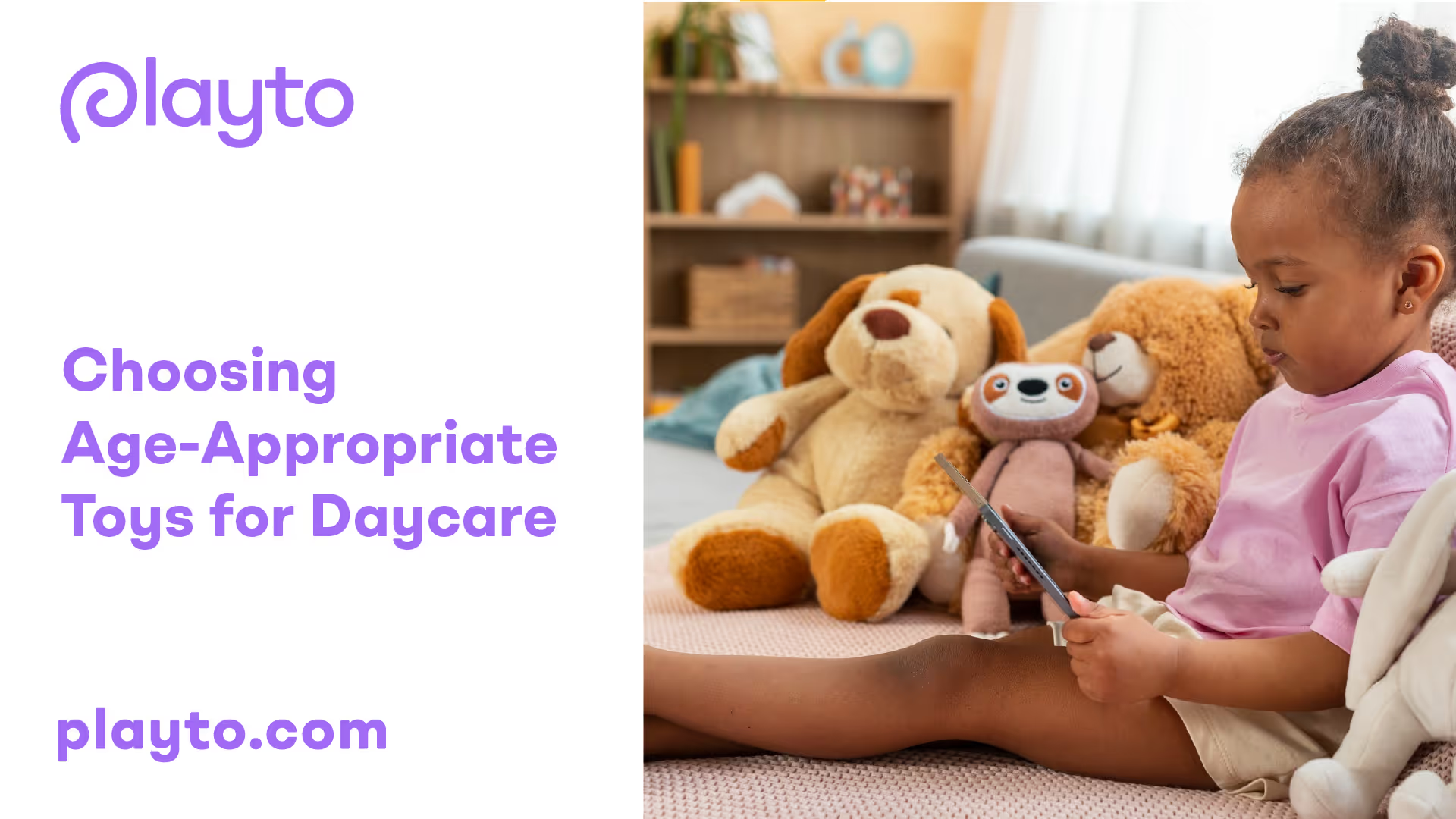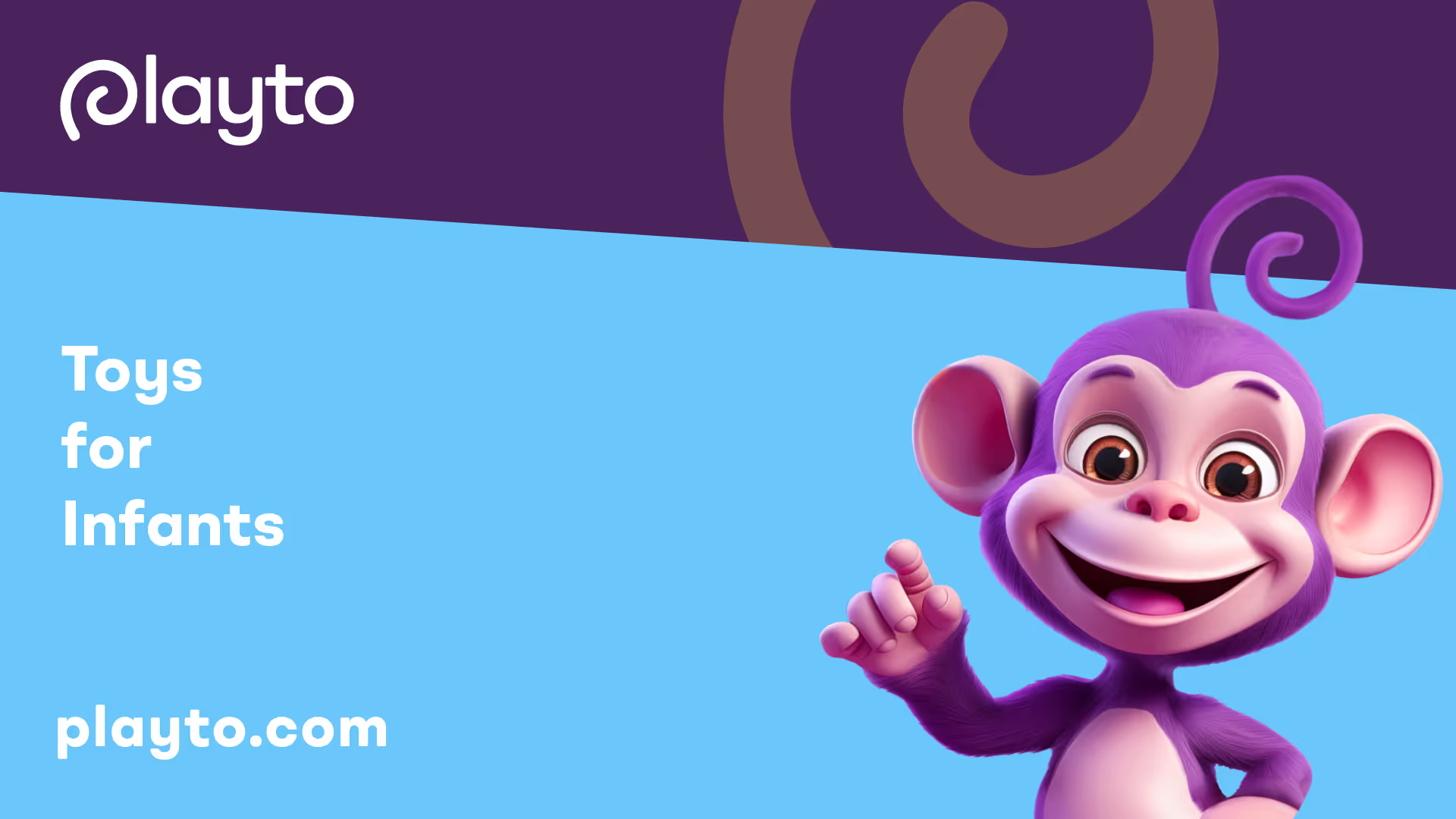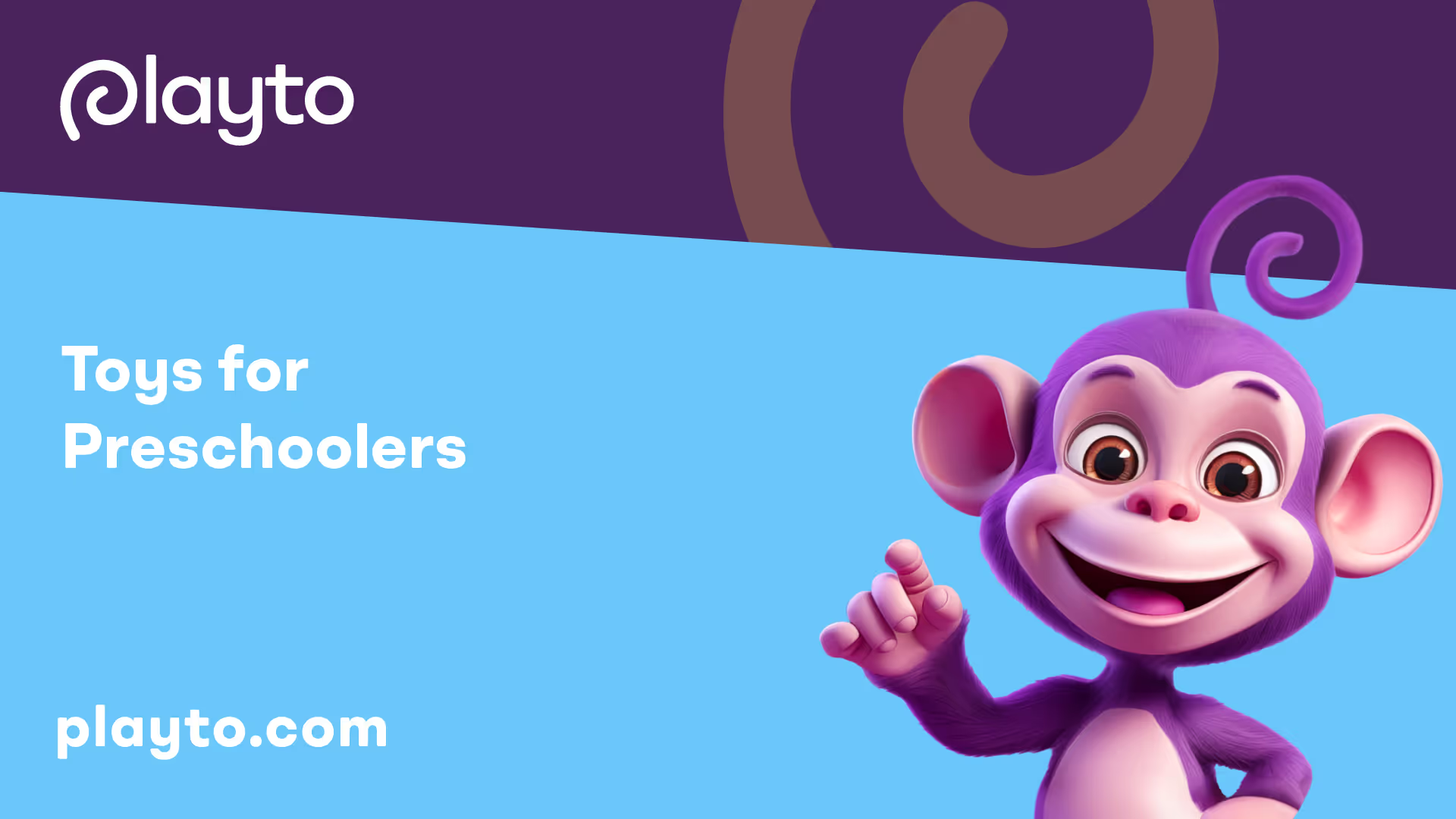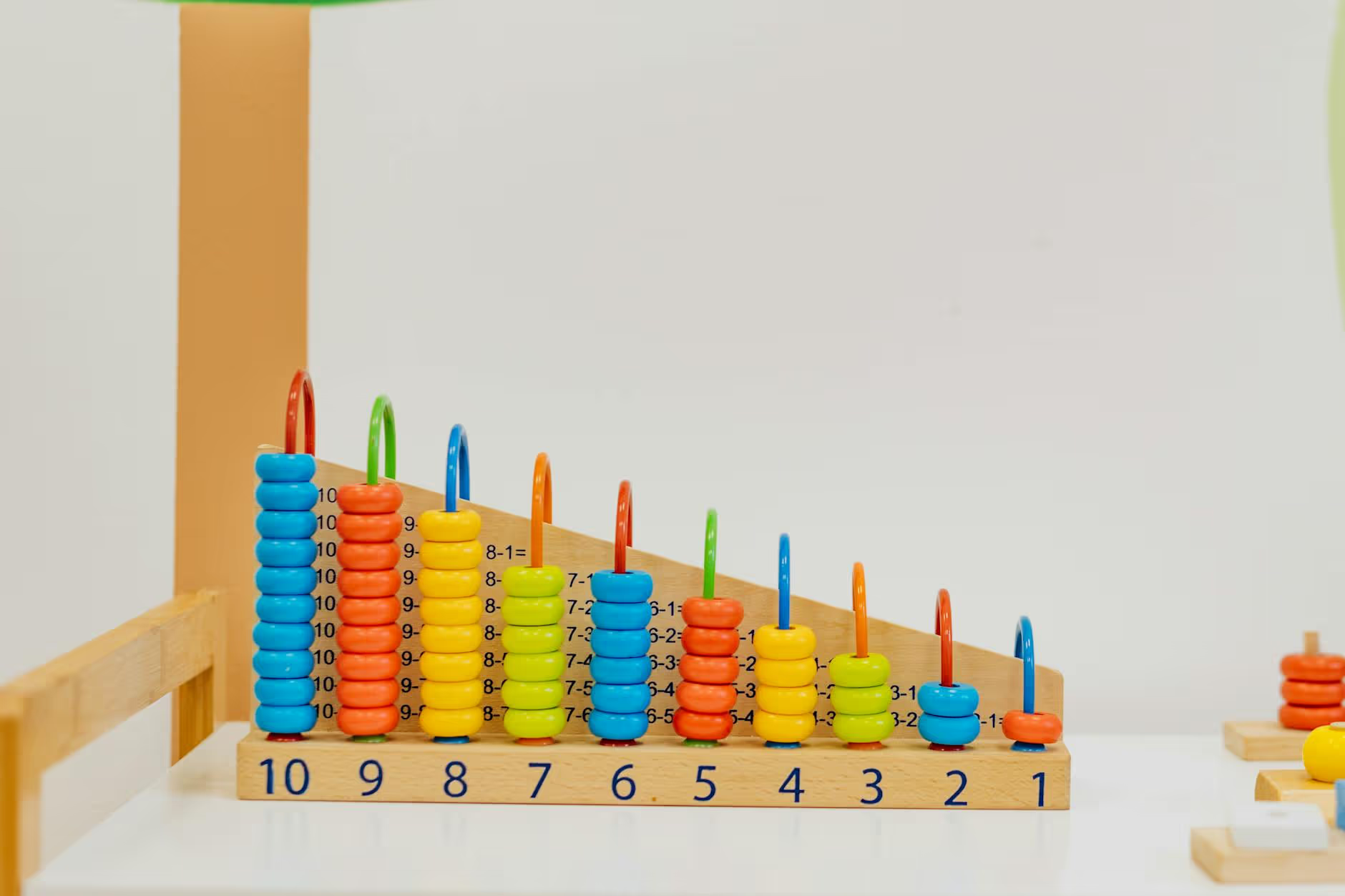Understanding Age-Appropriate Toys
When it comes to selecting toys for daycare, it's essential to choose age-appropriate options that cater to the developmental needs of the children. Age-appropriate toys not only provide entertainment but also support learning and stimulate growth. This section will explore the importance of age-appropriate toys and provide guidelines for choosing them.

Importance of Age-Appropriate Toys
Age-appropriate toys play a vital role in promoting healthy child development. They are specifically designed to align with the cognitive, physical, and social-emotional abilities of children at different stages of their growth. By providing toys that are suitable for their age, daycare providers can create an environment that fosters learning and engagement.
According to the American Academy of Pediatrics, age-appropriate toys contribute to the development of essential skills such as fine and gross motor skills, cognitive abilities, creativity, problem-solving, and social interaction. These toys support children's curiosity, imagination, and exploration, encouraging their natural desire to learn and discover.
By offering toys that are appropriate for their developmental stage, daycare providers can help children build confidence, enhance their self-esteem, and develop a sense of accomplishment. Additionally, age-appropriate toys can facilitate the formation of strong parent-child bonds and promote healthy relationships with caregivers.
Guidelines for Choosing Toys
When selecting toys for daycare, it's important to consider the developmental needs and abilities of the children. Here are some guidelines to help you choose age-appropriate toys:
- Safety First: Prioritize the safety of the toys. Ensure they meet relevant safety standards, have no small parts that can pose a choking hazard, and are free from toxic materials. It's crucial to regularly inspect toys for any signs of wear or damage.
- Consider Developmental Milestones: Familiarize yourself with the typical developmental milestones for each age group. This will help you choose toys that align with their current abilities and facilitate further growth. Resources such as the National Association for the Education of Young Children (NAEYC) provide guidance on developmental appropriateness [3].
- Encourage Active Play: Select toys that encourage physical activity and gross motor skills development. This may include items like balls, ride-on toys, or climbing structures that promote movement and coordination.
- Stimulate Cognitive Development: Choose toys that engage children's cognitive abilities, such as puzzles, building blocks, or shape sorters. These toys foster problem-solving skills, spatial awareness, and logical thinking.
- Promote Creativity and Imaginative Play: Provide toys that inspire creativity and imaginative play, such as art supplies, dress-up costumes, or building sets. These toys encourage self-expression, storytelling, and role-playing.
- Consider Social Interaction: Include toys that promote social interaction and cooperation among children. Games, pretend play sets, and cooperative building activities can enhance communication skills, sharing, and teamwork.
By following these guidelines, daycare providers can ensure that the toys they offer are not only enjoyable but also contribute to children's overall development. Remember to regularly assess and rotate toys to keep children engaged and provide new learning opportunities.
In the next sections, we will explore specific age-appropriate toys for infants, toddlers, and preschoolers, focusing on their unique developmental needs and interests.
Toys for Infants

When it comes to choosing toys for infants in a daycare setting, it's essential to consider their developmental milestones and provide safe and stimulating toys. Understanding the specific needs of infants at various stages of development is crucial for their overall growth and engagement.
Developmental Milestones
Infants go through rapid development during their first year of life. By understanding their developmental milestones, caregivers can select toys that support their growth and encourage exploration.
For example, by six months, infants start to roll over, sit up with support, and reach for objects. They become more interested in exploring their surroundings and engaging with toys. Understanding these milestones helps in selecting toys that align with their emerging abilities and encourage further development.
Safe and Stimulating Toys
When choosing toys for infants, safety should always be the top priority. Toys should be free from small parts that can pose a choking hazard and should be made of non-toxic materials. The Consumer Product Safety Commission provides guidelines for toy safety, ensuring that they meet the necessary standards.
In addition to safety, toys should provide sensory stimulation and promote hand-eye coordination. Soft toys with varied textures, such as fabric or rubber, can help infants explore different tactile sensations. Toys that make sounds or have contrasting colors can capture their attention and enhance their sensory experiences. Furthermore, toys with movable parts or simple puzzles can help develop their fine motor skills.
Toys that encourage interaction, such as rattles, soft blocks, or activity gyms, can also support early social and emotional development. These toys allow infants to engage in play with their peers or caregivers, fostering communication and social skills.
By selecting age-appropriate toys that align with infants' developmental milestones and prioritize safety, caregivers can create a nurturing and stimulating environment in the daycare setting. It's important to regularly assess and rotate toys to keep infants engaged and promote their ongoing development.
Toys for Toddlers
Toddlers are at a crucial stage of development, where they are rapidly acquiring new skills and exploring the world around them. Choosing age-appropriate toys for toddlers is essential to support their cognitive development and enhance their motor skills. Let's take a closer look at these two important aspects:
Cognitive Development
Toddlers are eager learners, and their cognitive development is a key focus during this stage. Toys that stimulate their thinking, problem-solving abilities, and imagination can greatly contribute to their cognitive growth.
One type of toy that promotes cognitive development in toddlers is shape sorters. These toys challenge toddlers to match shapes with corresponding holes, encouraging them to problem-solve and develop their spatial awareness. Puzzles with large, chunky pieces are also beneficial, as they help toddlers develop their problem-solving skills and hand-eye coordination.
Another category of toys that support cognitive development is building blocks. Toddlers can explore their creativity and problem-solving abilities by stacking blocks, creating structures, and learning about cause and effect. Building blocks also enhance their fine motor skills and spatial reasoning.
Motor Skills Enhancement
Toddlers are actively refining their motor skills, both fine and gross, during this stage of development. Toys that encourage physical activity and fine motor manipulation are important for their overall motor skills enhancement.
Ride-on toys, such as tricycles or push cars, help toddlers improve their balance and coordination while providing them with an opportunity for physical activity. These toys allow toddlers to engage in active play, which is crucial for their overall development.
For fine motor skill enhancement, toys like shape sorters, stacking toys, and interlocking blocks are beneficial. These toys require toddlers to use their fingers and hands to manipulate small objects, improving their dexterity and hand-eye coordination. Simple puzzles with larger pieces also aid in the development of fine motor skills, as toddlers learn to manipulate and fit the pieces together.
By providing age-appropriate toys that stimulate cognitive development and enhance motor skills, caregivers and educators can support toddlers in their overall growth and development. It is important to consider the recommendations and guidelines provided by organizations such as the American Academy of Pediatrics, Zero to Three, and the National Association for the Education of Young Children when selecting toys for toddlers. These resources provide valuable insights into the types of toys that are developmentally appropriate and beneficial for toddlers.
Remember, play is not only enjoyable for toddlers, but it also plays a vital role in their healthy development and strengthens the bond between children and their caregivers. So, let's ensure that we choose toys that engage and challenge our little ones while providing them with opportunities for learning and growth.
Toys for Preschoolers

Preschoolers have unique developmental needs, and providing them with age-appropriate toys is essential for their growth and learning. In this section, we will explore two types of toys that are particularly beneficial for preschoolers: social interaction toys and educational toys.
Social Interaction Toys
Social interaction plays a crucial role in the development of preschoolers. Toys that encourage socialization and cooperative play are highly beneficial for this age group. These toys provide opportunities for children to develop important social skills such as sharing, taking turns, and problem-solving.
Examples of social interaction toys for preschoolers include:
- Board games: Board games promote turn-taking, decision-making, and cooperation. They can also help develop cognitive skills such as counting and categorizing.
- Pretend play sets: Pretend play sets, such as kitchen sets or doctor kits, allow children to engage in imaginative play and take on different roles. This type of play helps enhance their communication and language skills.
- Building blocks: Building blocks encourage collaborative play, as children can work together to create structures. This promotes teamwork, spatial awareness, and problem-solving skills.
Providing preschoolers with opportunities for social interaction through these toys can foster their emotional and social development while also promoting a sense of belonging and cooperation.
Educational Toys
Preschoolers are in a critical stage of cognitive development, and educational toys can support their learning and stimulate their curiosity. These toys are designed to enhance various aspects of their development, including language skills, problem-solving abilities, and fine motor skills.
Examples of educational toys for preschoolers include:
- Puzzles: Puzzles help develop problem-solving skills, hand-eye coordination, and spatial awareness. They come in various difficulty levels, allowing children to progress as they master each level.
- Art supplies: Art supplies, such as crayons, markers, and finger paints, promote creativity, self-expression, and fine motor skills. Art activities also encourage imagination and help children develop their cognitive and emotional skills. For more information on the role of art in daycare, check out our article on the role of art in daycare.
- Counting and sorting toys: Counting and sorting toys, such as counting bears or shape sorters, introduce early math concepts, color recognition, and fine motor skills.
These educational toys provide an engaging and interactive way for preschoolers to learn and develop new skills while having fun. They can support their cognitive growth and lay the foundation for future academic success.
By providing preschoolers with social interaction toys and educational toys, daycare providers can create a stimulating environment that supports their development. It's important to ensure that the toys are safe, age-appropriate, and encourage active engagement. For more information on toy safety measures, refer to the section on toy safety measures.
Toy Safety Measures
When selecting toys for daycare, ensuring the safety of children is of utmost importance. It is crucial to consider toy material and take measures to prevent choking hazards.
Toy Material Considerations
Choosing toys made from safe and non-toxic materials is essential for the well-being of children. The American Academy of Pediatrics emphasizes the importance of selecting toys that meet safety standards and have been tested for compliance with regulations. Here are some common materials used in toys and their characteristics:

It's crucial to regularly inspect toys for any signs of wear, damage, or loose parts. Promptly remove any toys that show signs of deterioration to prevent accidents or injuries.
Choking Hazard Prevention
Preventing choking hazards is paramount when selecting toys for young children. The Consumer Product Safety Commission provides guidelines to help identify potential choking hazards. Here are some key points to consider:
- Avoid toys with small parts that can fit through a toilet paper roll. These parts can pose a significant choking risk for young children.
- Be cautious of toys with small magnets, as they can be swallowed and cause serious health issues if multiple magnets are ingested.
- Check for loose or poorly secured parts that could detach and become a choking hazard.
- Pay attention to age guidelines provided by manufacturers. These guidelines are designed to ensure that toys are developmentally appropriate and safe for children of a specific age group.
Regularly reviewing the U.S. PIRG Education Fund's annual survey of toy safety, such as the "Trouble in Toyland" report, can provide valuable insights into potential safety concerns and recalls.
By considering toy material and taking necessary precautions to prevent choking hazards, daycare providers can create a safe and secure environment for children to play and learn. Taking the time to carefully evaluate toys for safety ensures that children can enjoy their playtime without unnecessary risks.
Engaging Activities
In a daycare setting, engaging activities play a crucial role in promoting children's development and fostering their creativity. Two types of activities that can captivate young minds are sensory play and creative play. Let's explore some ideas for each of these activities.
Sensory Play Ideas
Sensory play involves activities that stimulate a child's senses, including touch, sight, sound, smell, and even taste. This type of play allows children to explore and understand the world around them while enhancing their cognitive and motor skills. Here are some sensory play ideas for daycare:
- Sensory Bins: Fill large containers with materials like rice, sand, water beads, or colorful pasta. Add scoops, funnels, and small toys to encourage exploration and imaginative play.
- Playdough and Clay: Provide children with playdough or clay to manipulate and mold. Add different scents, colors, or textures to enhance the sensory experience.
- Water Play: Set up water tables or basins filled with water and provide cups, funnels, and water toys. Children can splash, pour, and experiment with water to develop fine motor skills.
- Sensory Bags: Fill sealable plastic bags with various materials such as gel, colored water, or foam. Children can press and squish the bags to explore different textures and visual effects.
- Texture Exploration: Create sensory boards with different textures, such as fur, sandpaper, bubble wrap, or fabric swatches. Children can touch and feel the different materials to enhance tactile awareness.
Creative Play Suggestions
Creative play allows children to express themselves, develop their imagination, and build problem-solving skills. It encourages exploration, self-discovery, and the ability to think outside the box. Here are some creative play suggestions for daycare:
- Art Activities: Provide art supplies like crayons, markers, paint, and paper. Encourage children to draw, paint, and create their own masterpieces. For more ideas and inspiration, check out our article on the role of art in daycare and 15 art activities for daycare children.
- Dramatic Play: Set up a pretend play area with costumes, props, and a play kitchen or tool bench. Children can engage in imaginative play, take on different roles, and act out real-life scenarios.
- Building and Construction: Provide building blocks, magnetic tiles, or other construction toys. Children can experiment with different shapes and structures, fostering spatial awareness and problem-solving skills.
- Storytelling and Puppetry: Encourage children to create their own stories using puppets or storytelling props. This activity promotes language development, creativity, and critical thinking.
- Nature Exploration: Take children on nature walks and encourage them to collect leaves, rocks, or flowers. Back in the daycare, provide materials for creating nature-inspired crafts or encourage discussions about the natural world.
For more information on the benefits of creative play and additional ideas, refer to resources such as the National Association for the Education of Young Children (NAEYC) and the Raising Children Network.
By incorporating sensory play and creative play into the daycare environment, caregivers can provide children with opportunities for exploration, learning, and growth. These activities not only entertain but also support children's cognitive, social, and emotional development.
